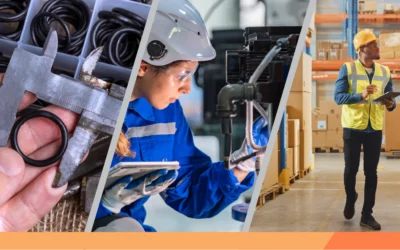The Client
It’s not uncommon for OEMs, mid-sized manufacturers, and small assemblers across various industries to request quotes from several suppliers at the same time. This allows them to feel confident that they are receiving the best value for their money because they know they’ve looked at all their options and chosen the one that has the right combination of cost, lead time, and quality for their needs.
For example, a manufacturer in the plumbing industry reached out to Rothkopf as part of their RFP to solve a problem they were having with a component in their product line.
When the manufacturer’s product began having field failures, Rothkopf had an opportunity to compete for the client’s business. The manufacturer communicated the problem and requested solutions from several major players in the rubber technology industry. Our team, including Rubberologist Tom Blair, got involved in the redesign effort and offered the best solution to prevent these failures in the future.



